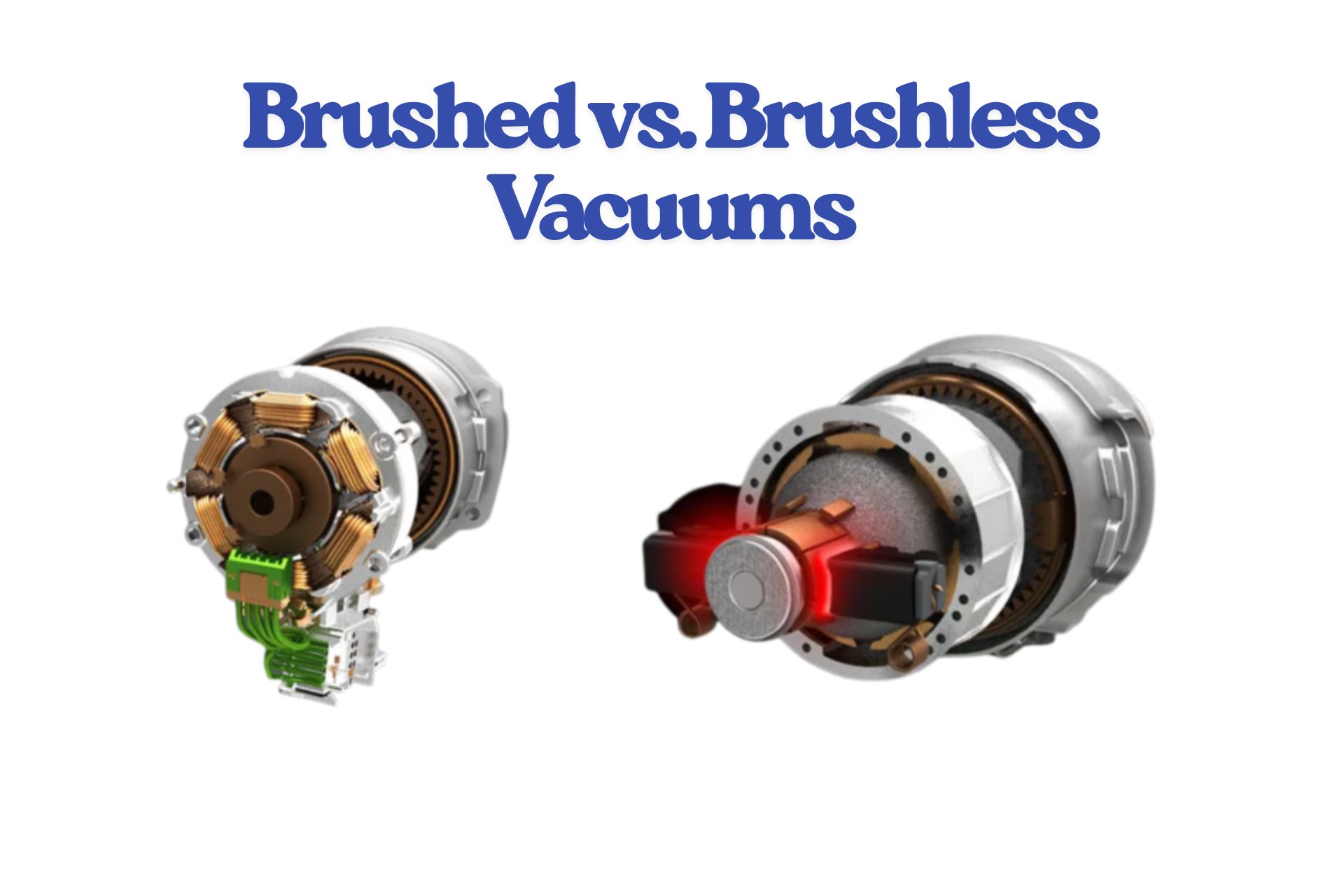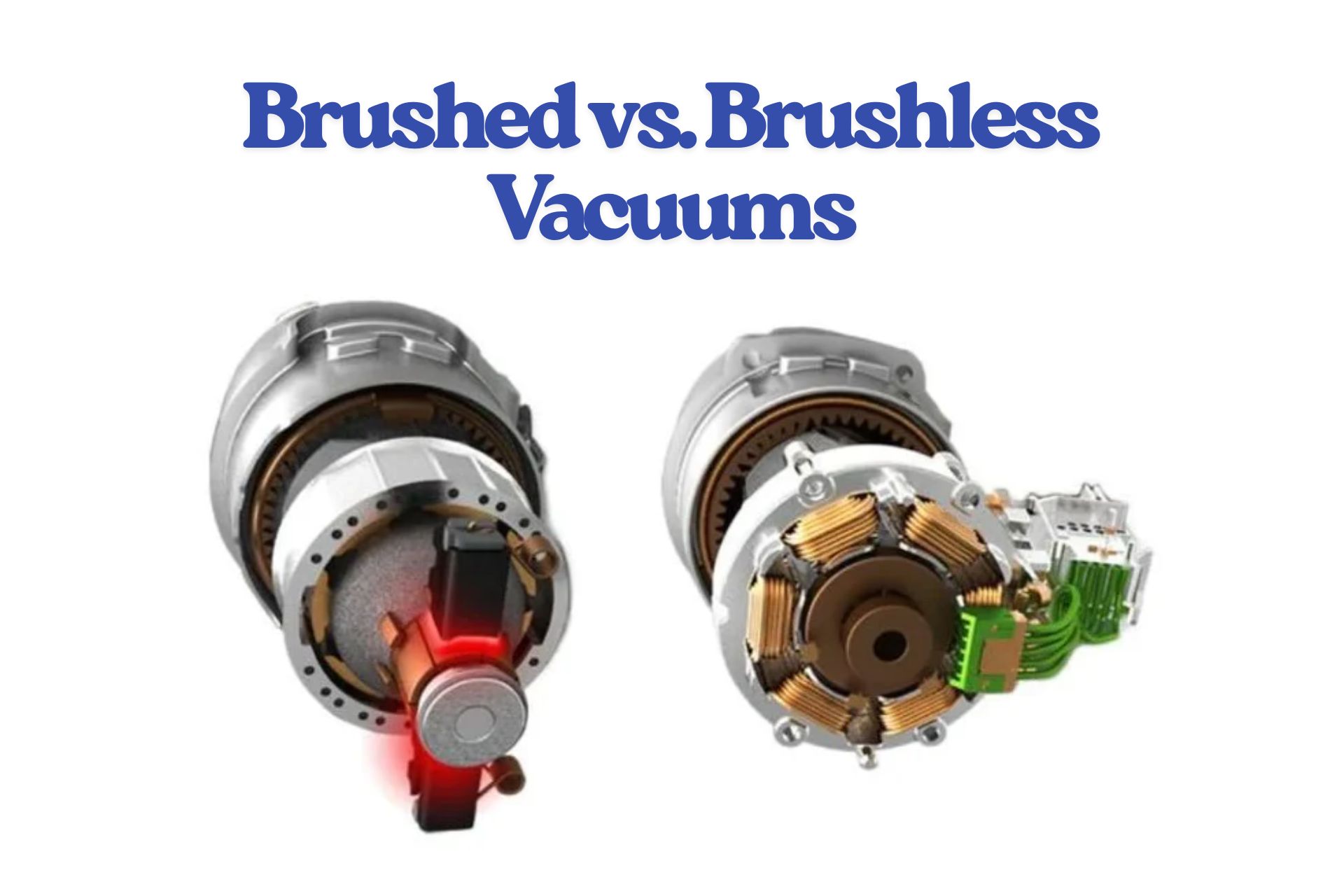Introduction
Choosing between a vacuum with a brushed motor and one powered by a brushless motor can feel overwhelming, especially as technology continues to redefine home cleaning appliances. With more homeowners seeking long-lasting performance, better energy efficiency, and improved suction, understanding these two motor types is essential. This guide breaks down how each motor works, how they affect vacuum performance, and which type ultimately suits your cleaning needs. By the end, you’ll have a clear picture of whether a brushed or brushless vacuum provides the right balance of power, efficiency, and durability for your household.

Understanding Brushed Motor Technology
A brushed motor is one of the oldest and most widely used motor technologies in household appliances, including vacuums. It uses carbon brushes that maintain contact with a commutator to generate rotation. This mechanical contact is what allows the motor to function, but it also introduces friction, heat, and wear over time.
How Brushed Motors Work
Inside a brushed motor, the brushes transfer electrical current to the spinning rotor. Because this process relies on direct physical contact, the motor produces a distinct sound—one that many people associate with traditional vacuum cleaners. The simplicity of the design keeps the cost low and makes it relatively easy to repair.
Advantages of Brushed Motors
- Affordable pricing: Vacuums with brushed motors are typically cheaper.
- High torque at low speeds: Good for older carpet styles that require aggressive agitation.
- Easy maintenance: Brush replacements are inexpensive and widely available.
Disadvantages of Brushed Motors
- Shorter lifespan: Brushes wear out over time.
- More noise: Friction generates noticeable sound.
- Heat production: Contact creates heat, reducing efficiency and longevity.
- More frequent maintenance: Brushes require periodic replacement.
While brushed motors still serve millions of homes well, they fall short compared to modern standards for energy efficiency and quiet performance.
Understanding Brushless Motor Technology
Brushless motors represent a major technological advancement in the vacuum industry. As the name suggests, they eliminate the need for brushes and instead rely on electronic controllers and magnets to generate rotation. Without friction-producing components, brushless motors offer superior performance in several key areas.
How Brushless Motors Work
Instead of carbon brushes, electrical energy is delivered through a circuit board that precisely controls the magnetic field. This not only increases efficiency but also reduces the risk of wear, heat buildup, and mechanical failure.
Advantages of Brushless Motors
- Greater durability: With no brushes to wear out, brushless motors can last years longer.
- Higher efficiency: Energy is converted into rotational force more effectively, boosting suction.
- Quieter operation: Less friction means significantly less noise.
- Less heat: Lower temperatures extend motor lifespan and reduce the chance of power loss.
Disadvantages of Brushless Motors
- Higher cost: The advanced design and components raise the price.
- More complex repairs: Electronic controllers require specialized parts and technicians.
Despite the higher initial cost, brushless motors are becoming industry standard due to their efficiency and reliability.
Brushed Motor vs. Brushless Motor: Key Differences
When comparing the two motor types, it is important to look beyond the mechanical differences and focus on real-world performance in vacuum cleaners.
1. Durability and Lifespan
Brushless motors clearly outperform brushed motors in durability. Without friction-producing brushes, these motors can run smoother and last several years longer. Brushed motors, meanwhile, naturally degrade over time as their brushes wear down.
2. Energy Efficiency
Brushless vacuums generally consume less power for the same amount of suction. This efficiency reduces electricity costs and heat output. In contrast, brushed motors waste energy due to friction and carbon dust buildup.
3. Noise Level
Brushless motors are noticeably quieter. For apartments, late-night cleaning sessions, or noise-sensitive homes, the reduction can be significant. Brushed motors create more sound because of constant internal contact.
4. Maintenance Requirements
Brushed motors require periodic brush replacements, cleaning, and sometimes lubrication. Brushless motors require virtually no internal maintenance, making them convenient for busy households.
5. Vacuum Power and Performance
Brushless motors generally produce more consistent suction and can reach higher speeds. Their precision control improves vacuuming efficiency on both hard floors and carpets. Brushed motors can perform well too, but their performance tends to dip as components wear.
Which Motor Type Is Best for Different Floor Types?
Flooring plays a major role in choosing the right vacuum, and each motor type has its strengths depending on the cleaning environment.
Carpets and Rugs
For thick carpets or older rug styles, brushed motor vacuums can offer solid torque at a lower cost. However, modern brushless vacuums typically outperform brushed ones, especially in deep cleaning.
Hardwood, Tile, and Vinyl Floors
Brushless vacuums excel here thanks to their smooth suction control and quiet operation. Their higher efficiency and lower heat also prevent dust re-circulation.
Mixed Flooring
If your home has a mix of surfaces, brushless vacuums provide more versatility. They adjust power more precisely and maintain consistent suction across different floor types.
Cost Comparison: Short Term vs. Long Term
Upfront cost matters, but long-term value should guide your decision.
Initial Cost
- Brushed motor vacuums: Usually more affordable.
- Brushless motor vacuums: Higher initial investment.
Long-Term Cost
Brushless vacuums often save money over time because they last longer and require fewer repairs. Brushed models may cost less upfront but need brush replacements and more frequent servicing.
Battery Performance in Cordless Vacuums
Most modern cordless vacuums use brushless motors for a reason: they deliver better battery efficiency.
Why Brushless Motors Improve Battery Life
By reducing friction and using energy more effectively, brushless motors allow cordless vacuums to run longer per charge. This is especially important for large homes or multi-room cleaning sessions.
Brushed motors drain batteries faster and may struggle to maintain strong suction as the battery level drops.
Environmental Impact: Which Motor Is More Eco-Friendly?
Brushless motors are the greener choice because of better energy efficiency and fewer replaceable parts. Brushed motors produce carbon dust due to brush wear, creating micro-debris over time. Fewer replacements, longer lifespan, and improved energy use make brushless motors the more sustainable option.
Brushless Motor Vacuums Are Becoming the Industry Standard
Many leading vacuum brands now use brushless motors in their flagship models. Their performance advantages are simply too significant to ignore. While brushed motor models still exist and serve budget-focused households, most new generations of vacuums rely on brushless designs.
When Should You Choose a Brushed Motor Vacuum?
A brushed motor vacuum may be the right choice if:
- You need a low-cost vacuum for occasional use.
- You prefer simpler technology with easy-to-replace parts.
- You mainly clean small areas or surfaces that don’t require extended motor life.
For casual or temporary use, a brushed model can still deliver solid performance without a high price tag.
When Should You Choose a Brushless Motor Vacuum?
A brushless motor vacuum is ideal if:
- You want long-term reliability.
- You need stronger, more consistent suction.
- You prefer quiet cleaning.
- You rely on a cordless vacuum and want optimal battery life.
- You want minimal maintenance.
For most households, brushless technology offers more value and convenience.
Brushless Motor in Smart Vacuums and Robot Vacuums
Robot vacuums rely heavily on brushless motors because of their energy-efficient performance and long operational life. The precision of brushless motors allows robots to maintain strong suction without overheating, making them perfect for daily cleaning cycles.
Brushed motors are rarely used in modern smart vacuums due to short lifespan and frequent maintenance needs.
Safety and Heat Management
Brushless motors run cooler because they eliminate friction. This reduces the likelihood of overheating during long cleaning sessions and helps maintain performance. Brushed motors, on the other hand, may heat up quickly, especially when dealing with thick carpets or extended vacuuming.
Future Trends in Vacuum Motor Technology
The vacuum industry is rapidly shifting toward fully electronic systems that integrate sensors, power optimization features, and AI-driven cleaning algorithms. Brushless motors are at the center of this evolution because they pair easily with digital controllers and smart-home systems.
Expect future vacuums to include:
- Adaptive suction powered by brushless motors
- Longer battery lifespans
- Improved noise reduction
- More compact motor designs
- Better integration with smart home ecosystems
As the industry moves forward, brushed motors will likely continue to decline in availability.
Consumer Experience: What Users Say About Each Motor Type
Brushed Motors
Users often appreciate the affordability and straightforward design. However, common complaints include noise, rough vibrations, and more frequent maintenance.
Brushless Motors
Most customers praise the quiet operation, powerful suction, and longer lifespan. Many note that the higher initial price becomes justified over years of use without major issues.
How to Decide: A Simple Checklist
Use this quick checklist to determine which vacuum motor suits you best:
- Do you want low maintenance? → Brushless
- Do you need the lowest price? → Brushed
- Do you vacuum often? → Brushless
- Do you need long battery life? → Brushless
- Are you okay with replacing brushes regularly? → Brushed
- Do you prioritize quiet performance? → Brushless
Conclusion
Choosing between a vacuum with a brushed motor and one with a brushless motor ultimately depends on your budget, cleaning habits, and expectations. While brushed motors remain practical for affordable, occasional use, brushless motors deliver superior efficiency, longer lifespan, and better overall performance. For most households, a brushless vacuum stands out as the smarter long-term investment.
